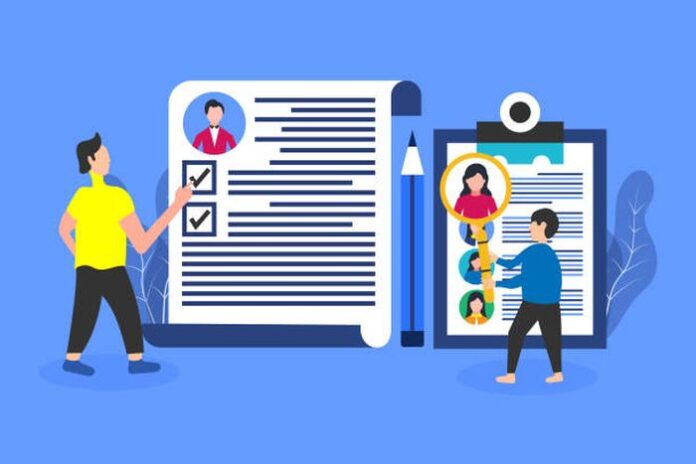
Officers from the local municipal police department arrived at the middle school. They had a warrant for the arrest of a teacher. The warrant was for an alleged rape of a student at the school. It was not a case of a minor giving consent for sexual contact, though consent is not legally permissible in those cases.
The allegation was for something much more shocking. The school administration felt an immediate sense of panic and a flood of emotions overtook them. As the story unraveled, it was revealed that the teacher was already under investigation for a similar offense – at another school. One, where the teacher was previously employed at. What? How? Wasn’t a pre-employment background check performed?
Indeed, the common question surrounding this and other examples, is what kind of pre-employment background check was done? To fully understand the dynamics of background checks the first thing to understand is, they are not all created equally. Focusing on criminal history alone, what one background vendor provides and their methods, may slightly differ from another. One employer’s request for search parameters may be different from another. Then there is the risk of a false positive. That’s when an applicant is flagged as having a criminal record…in error. For example, Health Street offers a host of state background checks, as well as drug testing.
While criminal data is better organized and aggregated than ever before, imperfection exists. There was a time a few decades ago, that smaller law enforcement agencies kept arrest records on index cards and jail logs.

Court records were misplaced or not inputted correctly into future data systems. Varying state laws exist regarding the reporting of crimes. This means the laws may or may not have dictated the forwarding of local convictions, to their respective state agencies.
In the case of our school, the situation suggests the alleged rapist may have fallen into what is commonly known as a ‘window.’ It means that possibly since no criminal conviction was on record, the background check failed to produce a finding. The teacher was only under investigation and apparently had not been criminally charged for the past allegation.
So, why is there so much uncertainty and inconsistency in pre – employment background checks? The question was posed to Zane Kinney, an investigator with Astinel Security & Forensics who says he and other professionals have seen the gaping holes for decades.
Kinney said in part, “We know that human and data errors exist, but assume for a moment all the systems are properly working. An offender can float from one employer to another while their case is being adjudicated without detection. Then, there are those who offend but are never criminally charged or convicted. Add to the mix, the reluctance of past employers to provide details on a previous employee’s work history and you can end up hiring a monster. It’s more challenging now since so many industries are in a labor crunch. They may decide to dilute long held standards.”
The investigator was asked his opinion on related issues –
What about the precept of innocent until proven guilty?

“Of course, a criminal charge doesn’t mean guilt. Further, innocent people may be outcast until their matter is settled.
Yet an employer, especially a school system, would want to know if an applicant who will be in the presence of students is under a criminal investigation. Besides, employers are not declaring innocence or guilt. They have to make informed decisions.”
What about reintegrating criminal offenders into the workplace and should employers re-evaluate their hiring standards?
“As always, employers should be careful about believing they are in the rehabilitation business. We do see efforts such as ‘ban the box’ legislation. Also, the Federal Bonding Program is in place which so many employers don’t use, that could. In addition, programs are expanding which provide job training to inmates for hard to fill trade positions. This will help but it takes time.”
“It’s important to understand that employers can still be held liable for negligent hiring. A close risk analysis combined with sound legal advice is necessary, if an organization is considering changing hiring standards. Second chances are grand but we see in cases of convicted fraudsters, they routinely re-offend. You should not put them back in a role of controlling monies. When it comes to the protection of children, school systems absolutely cannot relax standards. If anything, they need to revisit their hiring processes.”
Is there a best practice for conducting pre-employment background checks?

“We still see cases in 2024 where an employer didn’t perform a background check at all, which is astounding. Perhaps they were a small company which began to grow? At times, it’s a friend or relative of someone who already works in a company who is hired.
Along the way, the problematic employee re-offends or displays disturbing past behaviors. When someone is harmed in the workplace we’ve been asked to perform ‘after employment’ background checks. Often, we find past criminal history which reflects poorly on the employer. The question is rightfully posed, why didn’t the employer know? So, the first step is to do them.”
He says further, “If using a background wholesaler or vendor, review how expansive the checks are and where a potential gap exists. Don’t forget to require ‘federal criminal history checks’ along with state and local categories. Coordinate with legal counsel and review the questions on employment applications. Specifically, ensure clear legal language exists to address falsification or omission of information. This can be a benefit should a future criminal conviction be discovered that was missed.”

Kinney said another viable option is a company called Verensics. “Verensics is a virtual, automated online industrial & organizational psychologist interview platform that detects, prevents, and investigates counterproductive work behaviors.
It mimics a face-to-face interview to obtain information directly from the source – the interviewee. It learns the character of the interviewee to the point where it can identify when a person is uncomfortable answering a question honestly.”
He closes by saying, “It’s of no condolence to a workplace victim that you experienced a labor shortage, wanted to give a convicted felon a second chance or the pre-employment background check didn’t show a problem…if conducted at all.” For more information, see Verensics.
















